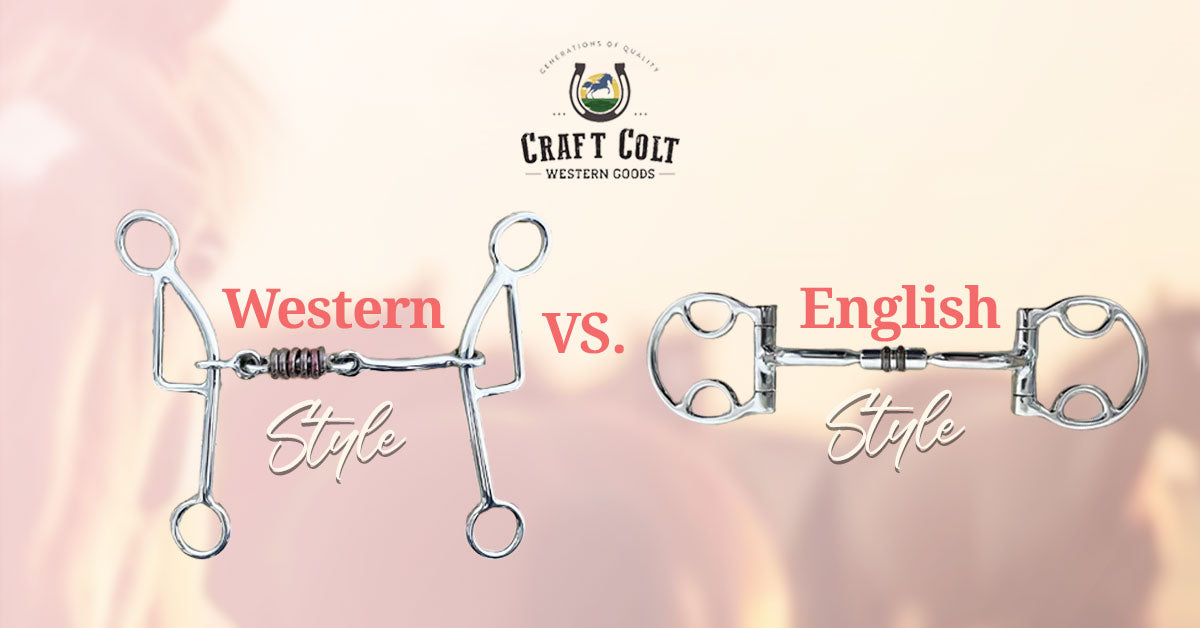
Understanding the Basics: Western vs. English Horse Bits Explained
Table of Contents
Horse riding, a sport rich in tradition and skill, is as much about understanding your horse as it is about mastering the ride. Central to this understanding is the choice of equipment, particularly the horse bit. A horse bit is more than just a tool for control; it's a crucial means of communication between rider and horse. In this comprehensive guide, we'll explore the fundamental differences between Western and English horse bits, offering insights to help you make the best choice for your equestrian journey.

The Role of Horse Bits in Riding
The horse bit, a device placed in a horse's mouth, is essential in guiding and controlling the horse while riding. It works by applying pressure to various parts of the horse's mouth and head, facilitating communication from rider to horse. The type of bit used significantly affects this communication, making the choice between Western and English styles a critical decision for any rider.
Understanding Western Horse Bits
Western bits are primarily designed for the needs of Western riding disciplines like rodeo, ranch work, and Western pleasure. These bits usually feature a curb style, incorporating a lever action that applies pressure to the horse's mouth, chin, and poll. A prominent example is this Stainless Steel Western Horse Bit for quick stops and starts typical in Western riding.
Exploring English Horse Bits
In contrast, English horse bits, such as those used in dressage, jumping, and eventing, typically have a simpler, more direct design. English bits, like the English Snaffle Bit, employ a direct pull action without the leverage effect. This design allows for more immediate and precise communication between horse and rider, a necessity in the refined movements of English riding disciplines.
Factors to Consider When Choosing a Bit
Selecting the right bit involves considering several factors, including your horse's level of training, mouth anatomy, and your own experience as a rider. The bit must be comfortable for the horse and appropriate for the level of control needed. For instance, younger or less trained horses might benefit from a gentler bit, like the Craft Colt Copper Roller Training Bit, which can encourage salivation and keep the horse's mouth soft and responsive.
Bit Materials and Horse Health
The material of the bit is another critical aspect. Common materials include stainless steel, copper, and rubber, each offering different benefits. Stainless steel is durable and easy to maintain, while copper can encourage salivation, leading to a more responsive mouth. Rubber bits are softer and often used for young or sensitive horses.
Training and Bit Selection
Training with the right bit is essential. A bit that's too harsh can cause discomfort or even pain, leading to resistance or behavioral issues in the horse. Conversely, a bit that's too mild might not provide enough control. It's a delicate balance that requires understanding your horse's temperament and response to different types of pressure.
Transitioning Between Bits
As your horse progresses in training or if you switch riding disciplines, you might need to transition to a different type of bit. This process should be gradual, giving your horse time to adjust to the new feel and pressure points. Observing your horse's reaction during this transition period is crucial.
Caring for Your Horse Bits
Proper maintenance of horse bits is essential for their longevity and your horse's health. Regular cleaning to remove debris and buildup, along with periodic checks for signs of wear or damage, ensures the bit remains comfortable and safe for your horse.
Conclusion
In conclusion, whether you choose a Western or English bit, the most important factors are your horse's comfort and the effectiveness of your communication with them. The right bit can make a significant difference in your riding experience, enhancing both safety and enjoyment for you and your horse. Always choose a bit that respects your horse's comfort and complements your riding style. After all, a happy horse makes for a happy rider!



